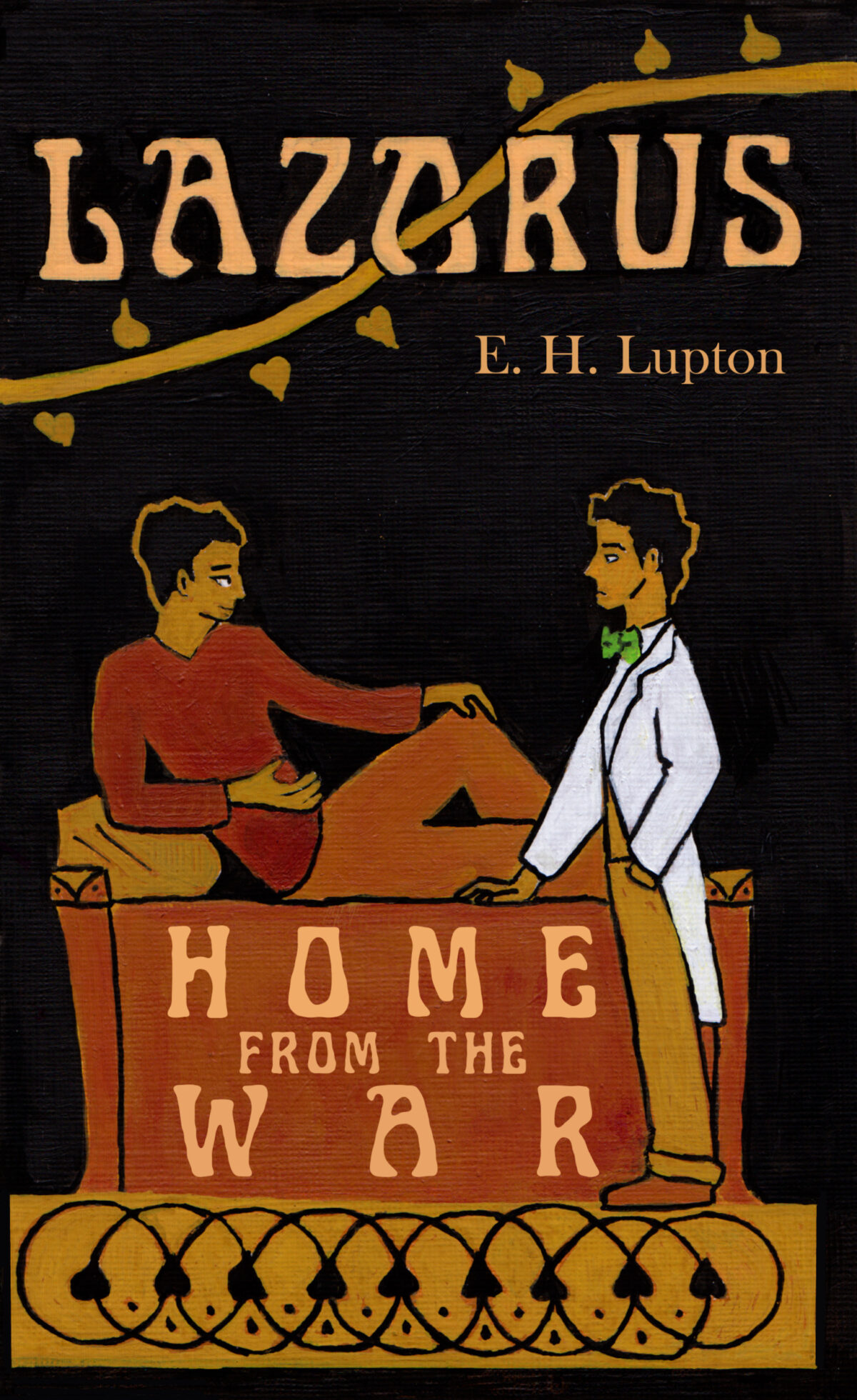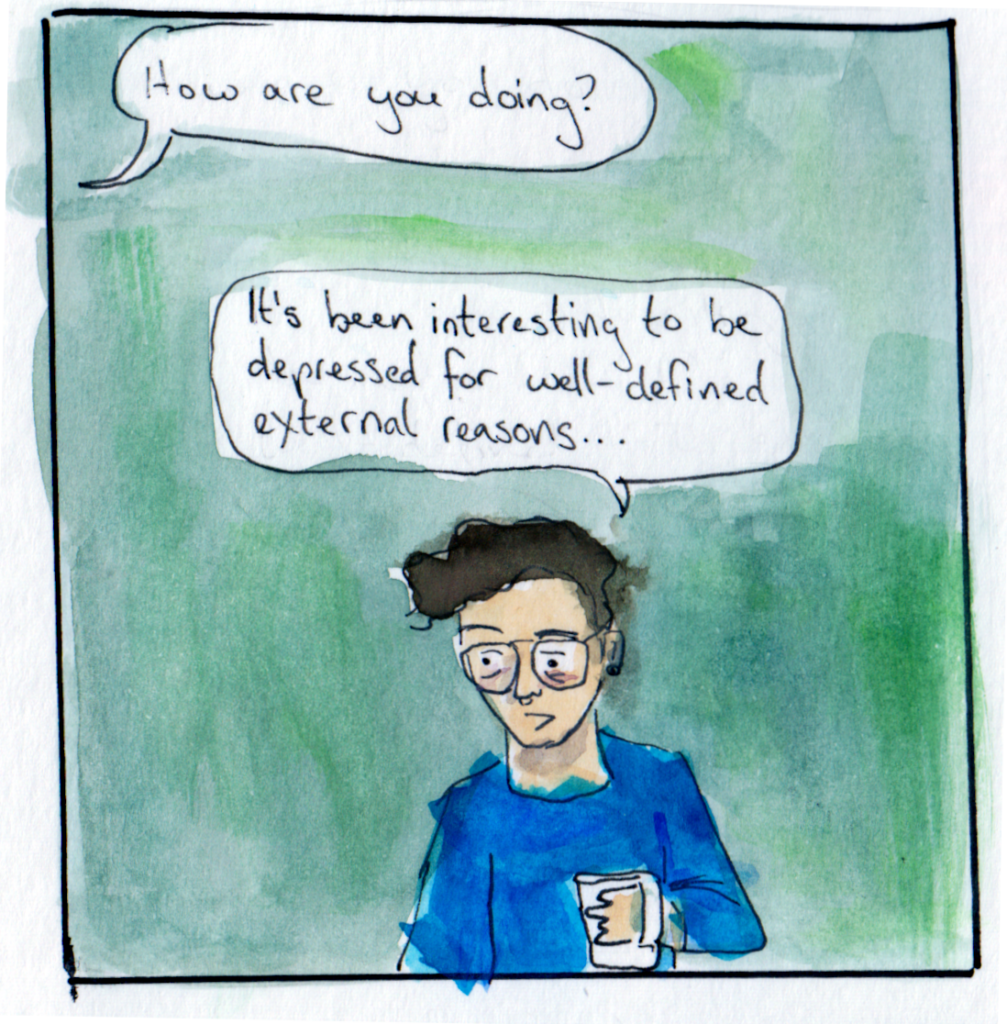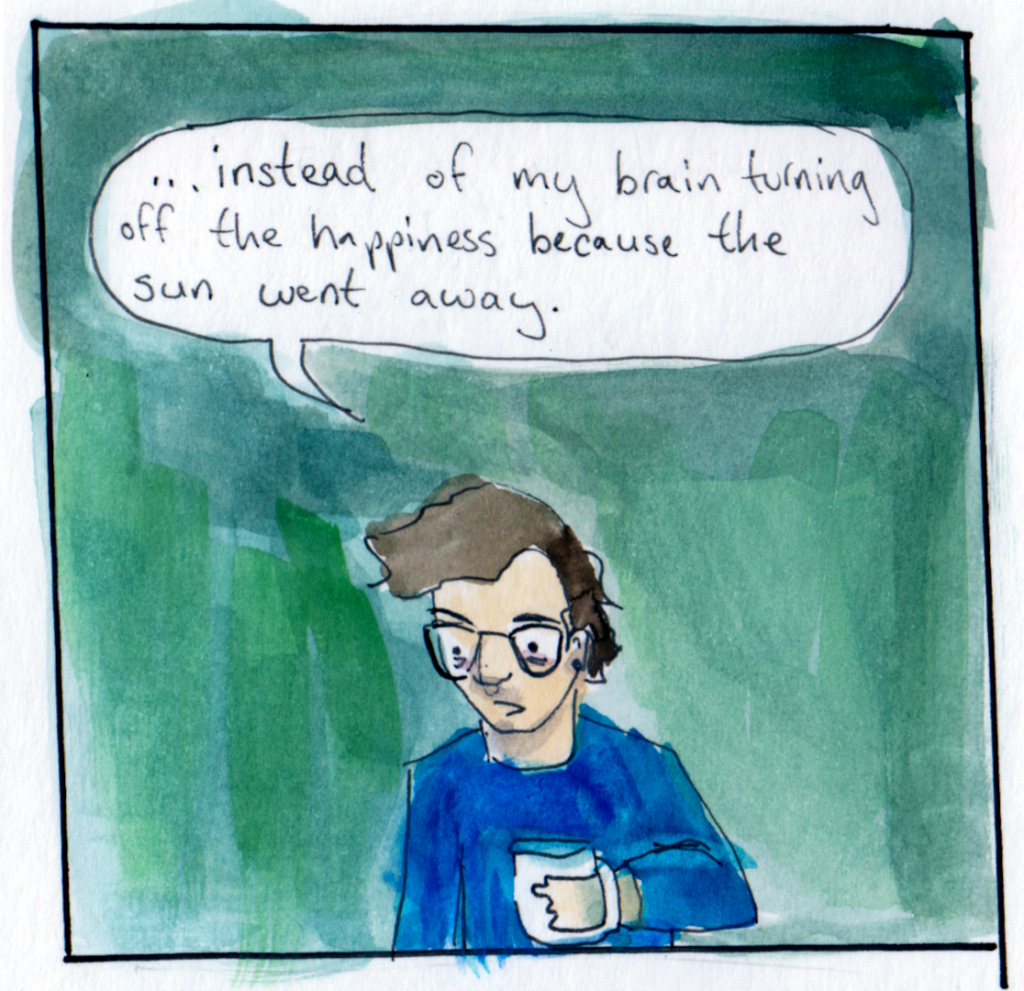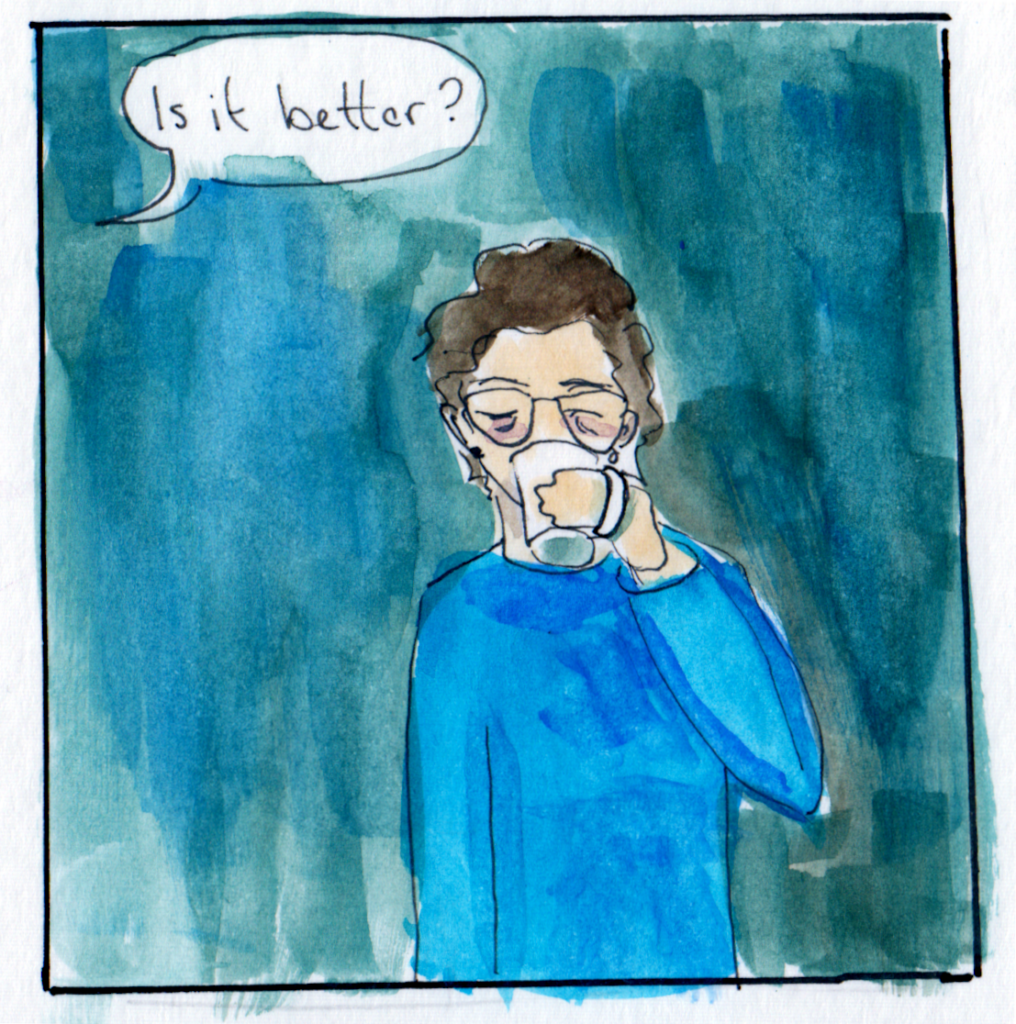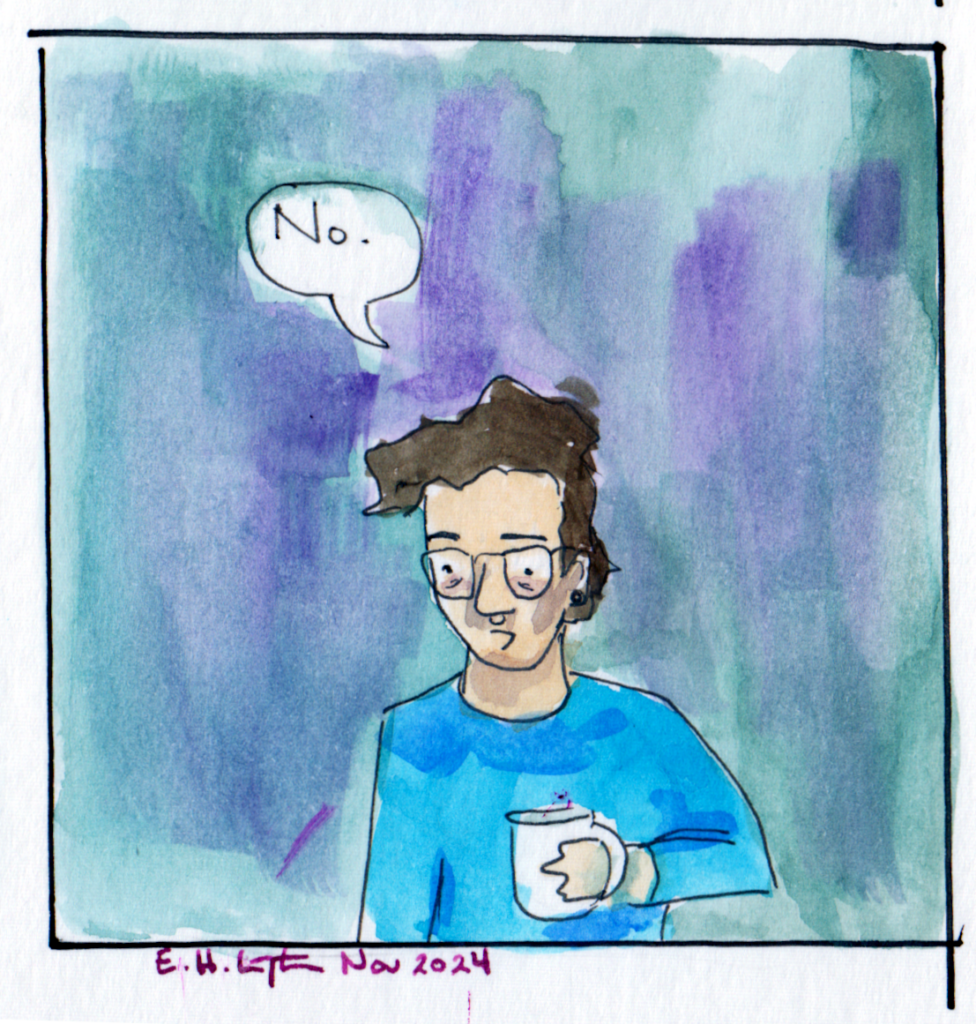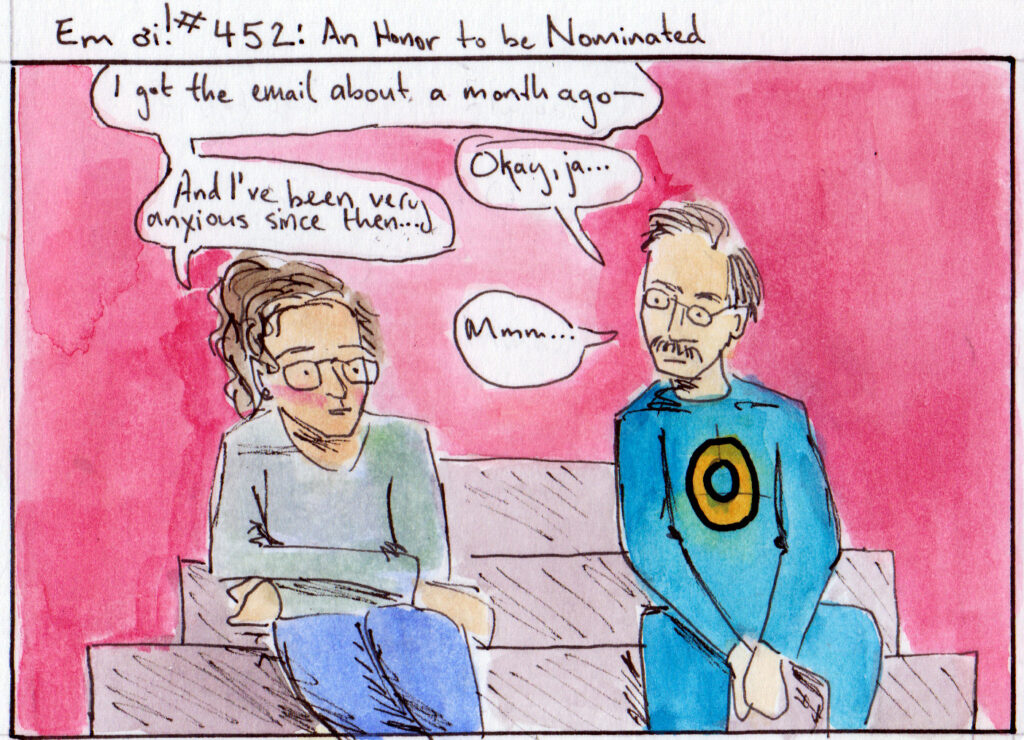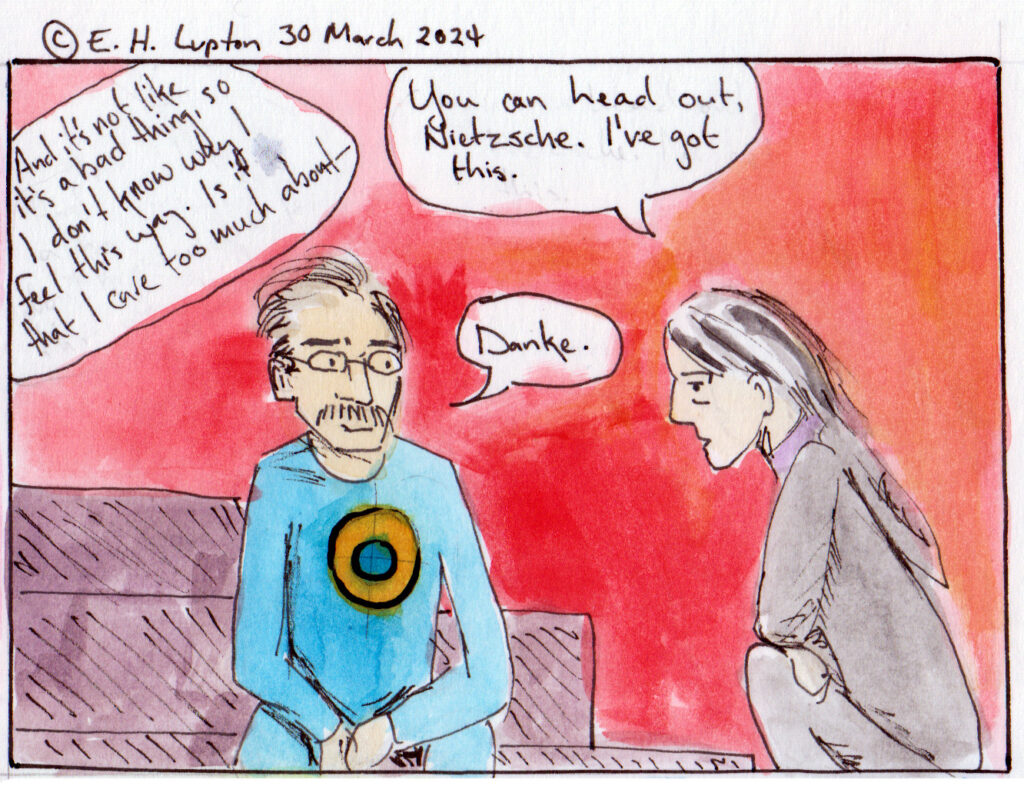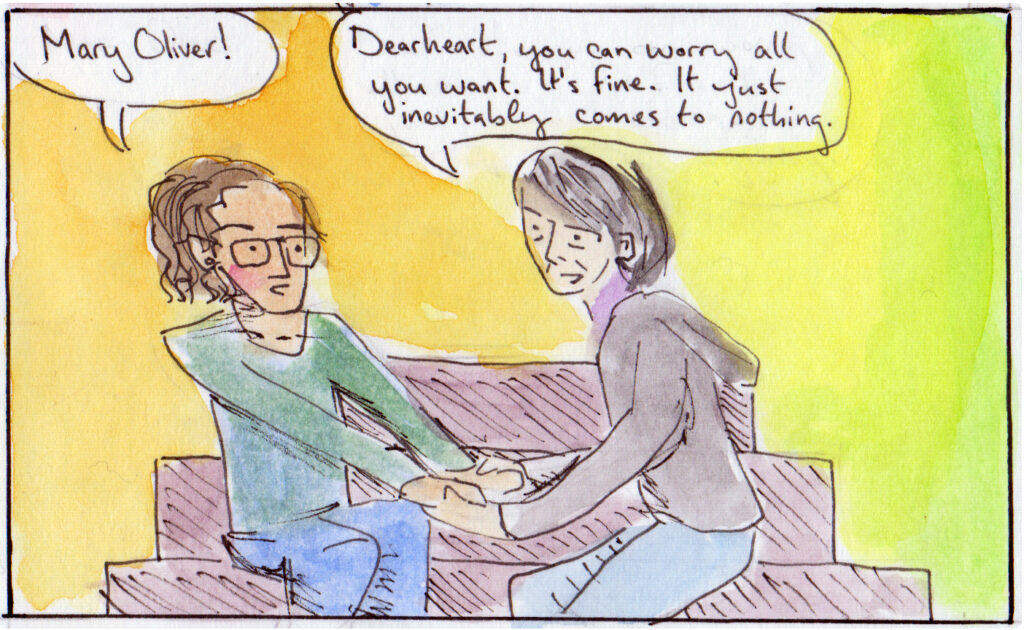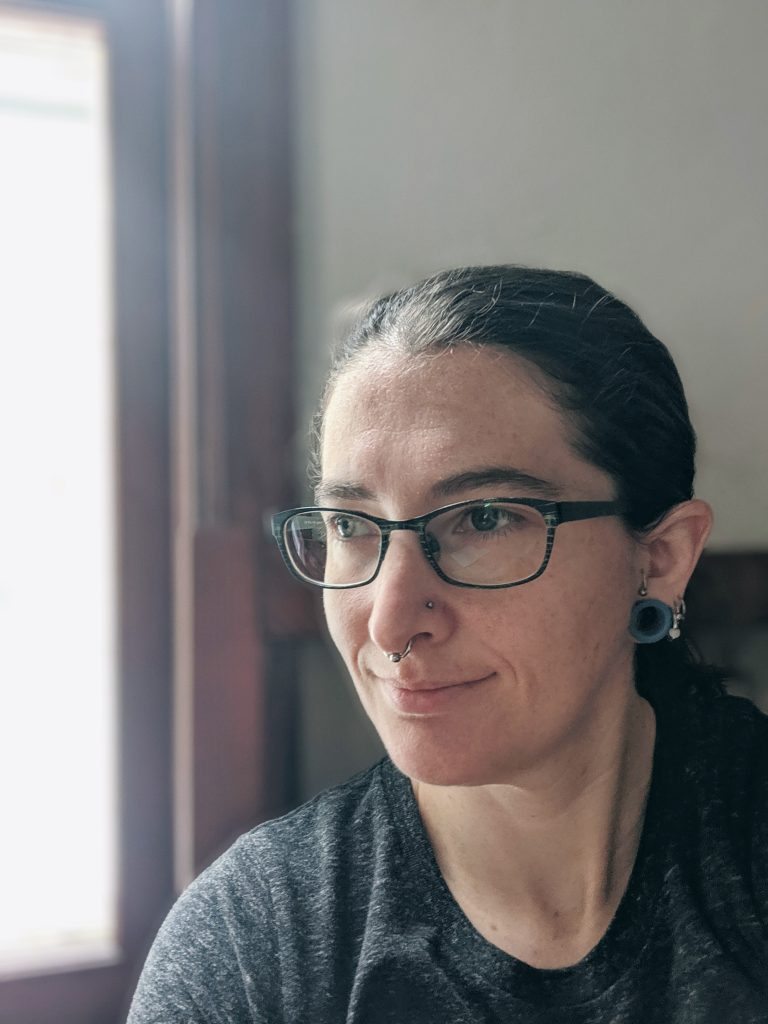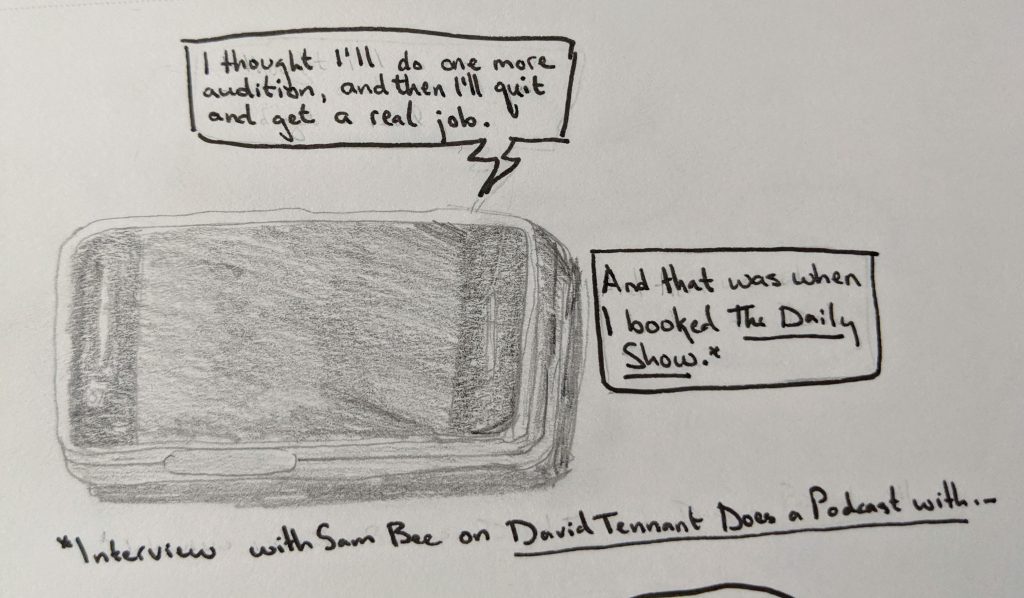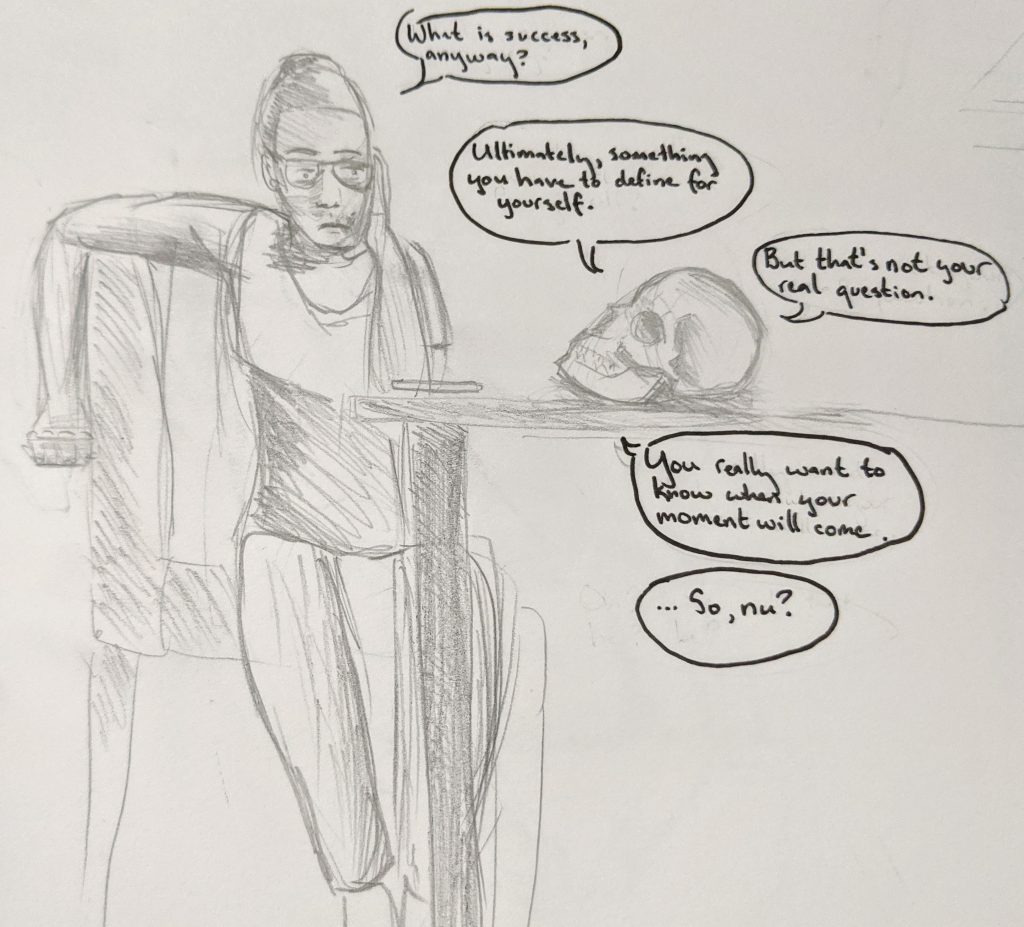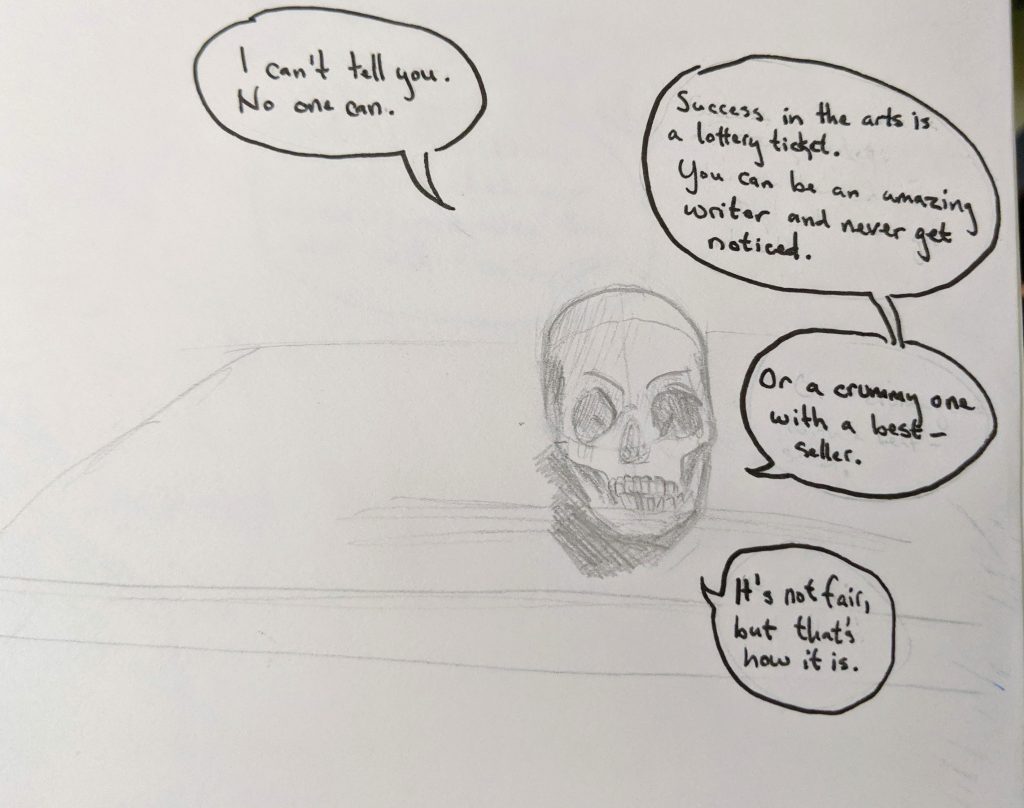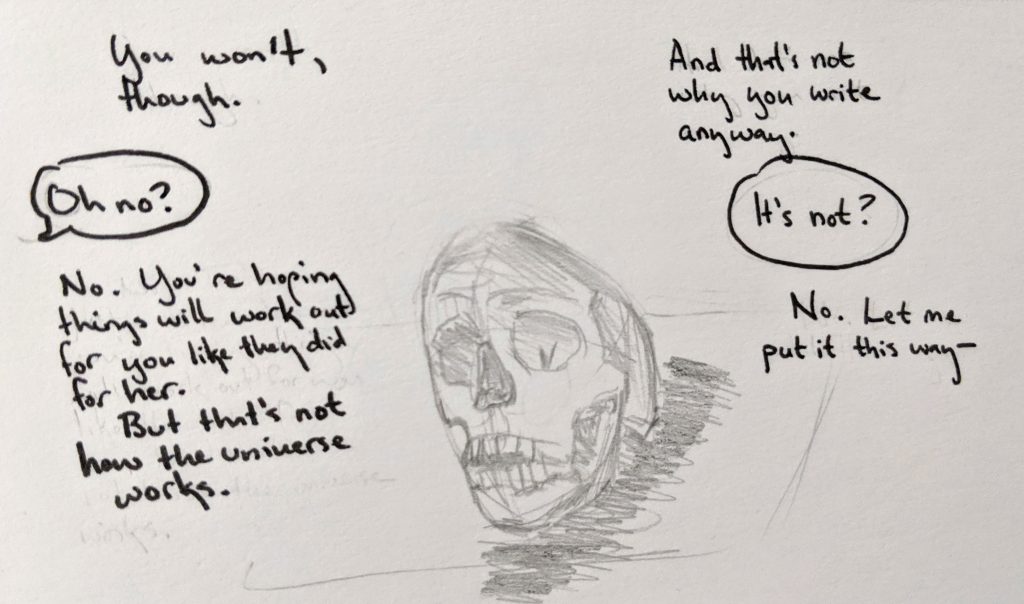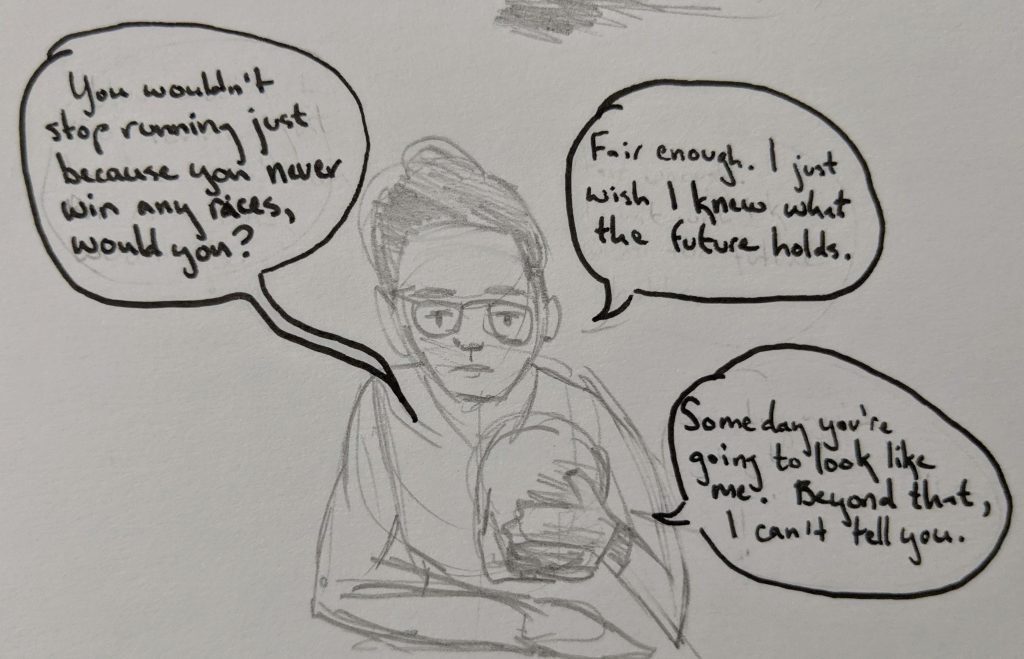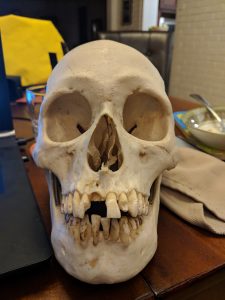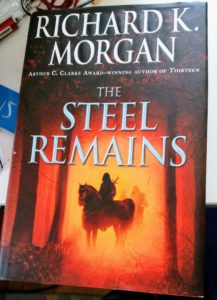Herbert, Frank. Dune. Ace Special 25th Anniversary Edition. New York: Ace Books, 1990.
Dune is apparently the most popular science fiction book ever published. I’m not kidding—you can google that shit. Anyway, this year is the 50th anniversary of its publication (1965–2015), and I had never read it. Then one night I was having a discussion with B about world building in scifi/fantasy and he said, “Every universe has one thing that it’s centered around. In Star Wars, it’s the Force. In Dune, it’s the spice.”
I was unfamiliar. Having just finished Solaris, I decided I would rectify that and dug out our copy.[1] Soon I was deep into to the world of the gom jabbar and the kwizach hadarach, the reverend mother and the melange. Many a night in the last few weeks I was up far past my bedtime, tellling myself I’d read just a few more pages before I turned out the light.
In case you, like me, have been living under a rock for the last my entire lifetime and then some, this is the plot (spoilers ahead):
Duke Leto Atreides, his concubine Lady Jessica, who is a highly trained Bene Gesserit adept, their fifteen-year-old son Paul (who has also been trained in his mother’s weirding ways), and the duke’s entire entourage pick up and move from Caladan, a normal-sounding planet with lakes and rainfall, to Arrakis, also called Dune, a desert planet where it never rains and the native Fremen wear special stillsuits designed to reclaim all bodily moisture for recycling. Arrakis was previously ruled by the Harkonnens, who are the mortal enemies of the Atreides, and the switch got made basically because the Padishah Emperor decided it should happen.
Not long after their arrival, the duke receives notice that there is a traitor in his midst. And then, returning from a night of supervising his troops, Duke Leto finds that the Harkonnens have engineered a plot to land highly trained imperial troops on the planet, kill him and his family, and take the place back.
After a daring escape and a lot of running around in which nearly every character you’ve come to care about dies in rapid-fire succession, Paul and the Lady Jessica wind up getting adopted by a band of Fremen led by a man named Stilgar. Lady Jessica actually takes Stilgar in close combat (unarmed) to gain their acceptance, and later on Paul knifes a guy, so it’s not like this part of their journey was easy. After they return to the Fremen home base, Lady Jessica (who is pregnant with the late duke’s child) is tested with the Water of Life and becomes a Reverend Mother (a type of religious leader), which means that she gets certain powers primarily related to communicating psychically (in a sense) with the band’s previous Reverend Mothers. This isn’t good for the fetus (who will grow up to be St. Alia of the Knife), but what can you do.
Meanwhile, Paul falls in love with a Fremen woman named Chani, and they will have a son together in fairly short order, because I guess condoms don’t exist in the year 10,191. Paul, now known by the Fremen as Usul (privately) and Maud’dib (publically), to say nothing of his other titles (Lisan al-Ghaib for one, and Kwisatz Haderach for another) is able to see the future to some extent because of the spice, his natural inclinations, and the Water of Life. Eventually, he leads the Fremen to freedom from the Harkonnens and bullies the emperor into abdicating and letting him marry his daughter in a political alliance, making him at about age 17 or 18 the emperor.
Whew. So it’s a long book. I actually haven’t touched on about 90% of what goes on, because there’s a ton of subplots. The gist of it is that everyone has a plan. The Bene Gesserit, for example, have been manipulating the various nobles in a breeding program to try and get the Kwisatz Haderach. What they intend to do with him is not clear.[2] Baron Harkonnen has a plan to get his nephew Feyd-Rautha on the imperial throne as well, which somehow involves his other nephew (“Beast” Rabban) taking over Arrakis as ruler and running it into the ground; that’s to say nothing of his initial plot to kill Duke Leto, of course. The emperor has his own plots involving control of the spice market and the nobility. The Guild (the ones who fly everyone around through space) take spice from the Fremen in exchange for preventing weather satellite and other disturbances, giving the Fremen time to execute their plan—the very gradual terraforming of Dune. I think there might be even more plots than that, some of which don’t really play out until the sequel.
This is an interesting and problematic book for a number of reasons. First, there are the women. I’ll just say that Lady Jessica is basically one of the best female characters I’ve ever encountered. Super smart, unflappable in the face of danger, highly deadly in hand-to-hand combat, and capable of undergoing the spice agony and transforming the Water of Life within her body—basically a bad ass. Highly determined and difficult to control, too—did I mention she’d originally been ordered by the Bene Gesserit to produce a daughter for Duke Leto rather than Paul? She does what she wants. She also has two kids who are highly trained Bene Gesserit adepts, trained by herself. I should mention at this point that Herbert evidently based Lady Jessica on his wife, which makes me pretty happy because in other respects he was a little bit shitty (I’ll get to this) and I feel like it redeems him for me a bit.
Unfortunately, the other women in the book are not quite as exciting as characters go, mainly because there is a strong male/female divide throughout the text. Not just within the Reverend Mothers, as I mentioned earlier, although there is that and it’s explained away by the fact that men take and women give and it’s hard for the two sides to look at each other, which would be an interesting sentiment if Herbert followed it to its natural gender-deconstructing answer in Paul, but he doesn’t. Beyond that, women are largely confined to the home and sietch (the Fremen settlements); they counsel and advise, and they have children, and they plot, but they have to have men to listen to them/to manipulate in order to actually achieve anything. Chani, the woman Paul falls in love with, is out on patrol with a group of Fremen when he meets her, and she actually knifes a couple of people over the course of the book . . . until she has kids and gets sent to a safe place for most of the rest of the story. Also, after she meets Paul she basically has no concerns besides his well-being throughout the rest of the book. Within the Fremen society, if you kill a guy, you are asked to take care of his wife and kids—and you’re given the option of marrying the wife or taking her as a servant for at least one year, and it doesn’t seem like she gets much say in the matter. The woman Paul inherits in this way seems very practical and totally willing to marry a guy who knifed her husband not 24 hours before. Women in the sietch basically exist to produce children; they do a few other sietch jobs but they’re there, and the men care for them. The other major female character is Reverent Mother Helen Mohiam, who is scheming and manipulative—scary and powerful, but only by acting through others, primarily the emperor.
In a somewhat related vein, we have the Harkonnens, who are the enemies of the Atreides and very evil. We know they’re evil because—and this is where the writing of Frank Herbert sort of fails to come into its own—the second chapter involves Baron Vladimir Harkonnen basically telling us his evil, evil plot to kill the Atreides through devious underhandedness while he strokes his mustache and laughs maniacally. If that weren’t explicit enough, we also get all these signs (and by signs I mean, I guess, stereotypes) that tell us the baron is a bad dude—he’s super fat, for one (he has to wear suspensors to maneuver his bulk around) and is a glutton for food and power. He’s homosexual, or at least seems to prefer men; he also expresses lustful thoughts about then-15-year-old Paul and not only buys slaves but has them drugged so he can have sex with them more easily. He makes his nephew, Feyd-Rautha, kill people—and okay, it’s not like his nephew was a good guy either, because we see him displaying his killing talents by fighting gladiators with a poisoned blade.[3]
Both of these things—the women’s rather distinct position in society and the rather heavy-handed “clues” to the Baron’s evilness (fatness, homosexuality)—feel like relics of the time period of the book’s initial publication. I’ve talked before about the feeling one gets, reading old science fiction, that while writers (inevitably men) were sort of sure that women would exist in the future, none of them are exactly clear on what they’ll be doing. “Women doing science? Having thoughts? Why would these things ever happen?” they seem to think, and so you see women along in various situations—spaceships and what have you—in which they serve as some sort of more or less sophisticated window dressing. I’m looking at you, Uhura. The Baron’s indicators of evil just feel dated. First, I have to wonder, given the average size of people in 1965 compared to 2015, how fat Herbert thought was so fat it needed anti-gravity devices to move around. Second—and this is what I mean when I said this is kind of shitty of Herbert—he had two sons. One (Brian Herbert) has made his living clinging to Dune’s coattails; the other, Bruce Herbert, was a gay activist who died of AIDS in 1993. Now, at the time Dune was published, Bruce would have been 14, which at the time was very young for a kid to be out of the closet, so I’m perfectly willing to believe that Herbert was mostly reflecting the unconsidered opinions of the time and may have changed his tune later on when he found out his son was gay. But still, kind of shitty.[4]
The book has a bunch of really interesting themes that Herbert addresses with varying levels of sophistication. For example, the tendency of people to follow leaders rather unquestioningly, the uses (and problems) of being able to see the future, the idea of fate and whether or not it can be avoided or changed, the question of the greater good, and different systems of government and their benefits and drawbacks. Perhaps most interestingly, Herbert is concerned with the intertwining of religion and politics; Paul benefits from the Bene Gesserit’s propagandists, who basically primed the community of Fremen to believe in him.
Actually, there are a lot more questions I have to ask about this book, like is it another example of the “White guy joins a foreign culture and becomes its most awesome member” genre (surprisingly hard to answer briefly), as well as the converse position, “Is everyone on Dune White?” (films say yes), but this review is already well over 2,000 words, so I don’t have time here. So to wrap up: Herbert’s writing is exciting if mostly unpoetic (he has his moments), and the text is very engrossing. This particular edition of the book is nice in that there’s a dictionary at the back as well as some other appendices that try to explain the world Paul’s living in. It does suffer from less-than-perfect typography, which includes not just quotation marks facing the wrong way, but also lines of text printed at different sizes and sometimes even randomly repeated. I’d guess that there’s been a better reprinting since 1990, so if you’re looking to read the book, seek that out.
[1] I was given my copy of Dune by a friend I’d lent a calculus textbook for a semester to as a thank-you present.
[2] Basically,when the Bene Gesserit Reverend Mothers look into their minds, they can see a sort of hallway with all the Reverend Mothers along it, and they are able to receive advice from those who came before—so history is preserved within them, as a sort of living racial memory. But there’s a male side to the corridor too, and none of them can access that information. So they have embarked on a breeding program to produce a man who can. Why they want that information and why they thought such a person would be someone they can control is not revealed.
[3] Part of this scene reveals that it’s typical to fight the gladiators when drugged, which seems unfair. Feyd-Rautha instead fights them undrugged, but with a conditioned “stop” word that he can use as a distraction to stab the guy. In one of those awesome literary parallels, Feyd also has a similar word implanted in him, but during their final combat Paul refuses to use it . . . and yet, his saying “I’m not going to say it” makes Feyd freeze enough that Paul can stab him. So. What happened.
[4] One always wants to believe that writers have more considered opinions than other people and think the “right” thing even when others are still against it. Of course, this is clearly not the case—there have been plenty of racist/sexist/homophobic writers who were still great writers (see the line about “The Earth, that with this strange excuse/Pardoned Kipling and his views” in the William Butler Yeats farewell poem written by W. H. Auden). Auden later removed that stanza, which makes me wonder if he actually decided that the Earth does not pardon Kipling . . . but regardless of his [Auden’s] thoughts on the matter, there are a lot of people who have forgiven Kipling.


